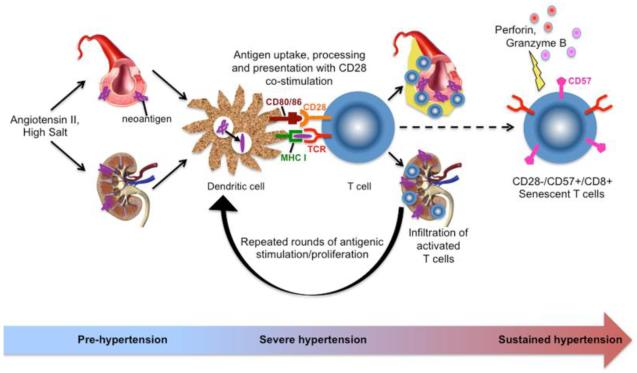Figure.
Hypothetical scheme for activation and differentiation of CD8+ T cells in hypertension. Hypertensive stimuli such as angiotensin II or high salt causes mild hypertension, resulting in vascular damage, mild oxidative stress, and the formation of neoantigen(s). These promote T cell activation and infiltration of target organs such as the vasculature and kidneys, leading to further vascular damage, endothelial dysfunction, salt and water retention, and more severe hypertension. Repeated antigenic stimulation of T cells eventually leads to loss of CD28, gain of CD57, and formation of cytotoxic, pro-inflammatory senescent CD8+ T cells. These cells then, through production of perforin, granzyme B, and cytokines/chemokines, amplify and sustain the hypertensive response and the end organ damage associated with hypertension.

